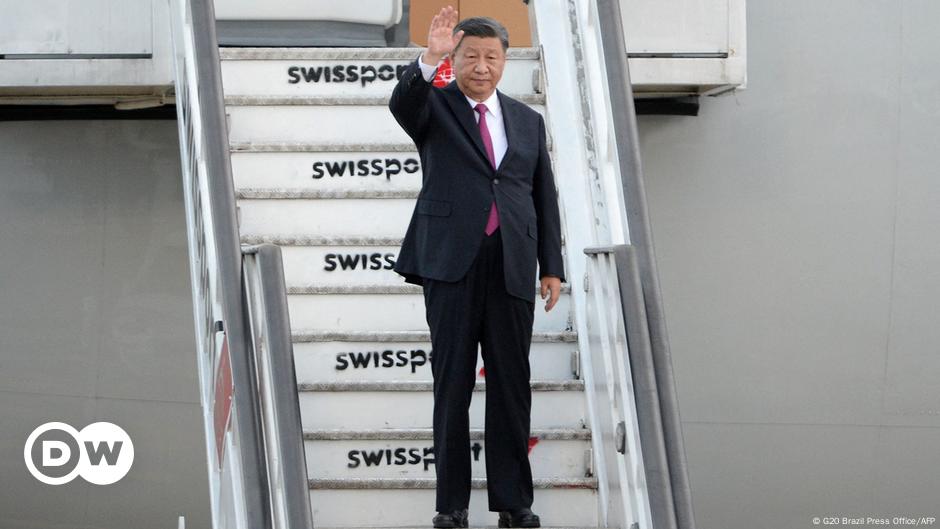What President Javier Milei did at last week’s G20 summit in Rio de Janeiro (and perhaps even more what he did not do) has been submitted to exhaustive analysis. This column will approach this subject from a slightly different angle to ask what Argentina is doing in the G20 (a question which would have been massively compounded had Milei gone through with his rambunctious rhetoric).
Argentina was an odd man out in the G20 long before the shaggy libertarian embarked on his solitary crusade against Agenda 2030. The G20 supposedly groups the world’s most important economies combining some 85 percent of global output. The planet’s “trillionaire” economies numbering 13 digits or more also happen to total 20 – 19 countries plus California (a list not including various trade blocs). There is an almost complete overlap between those 20 trillionaires and the G20 housing 17 of those 19 countries – Argentina and South Africa occupy the places of Spain and the Netherlands (whose absence is partially compensated by the inclusion of the European Union with California obviously forming part of the United States).
South Africa, the next summit’s host, can at least plead representing an entire continent which would otherwise be denied a voice (or at least until the African Union became an adjunct last year) whereas Latin America is already covered by Brazil and Mexico. A G20 member commands 4.2 percent of global output on average whereas Argentina chips in at around 0.55 percent. In the quarter-century it has been a member, this economic featherweight has been dominated by isolationist and protectionist thinking for at least two decades – so much so that it was a tremendous relief for the forum when the 2015-2019 Mauricio Macri Presidency opened a window for Argentina finally being allowed its turn as summit host (2018). So, quite independently of Milei’s antics, the question arises: What is Argentina doing in the G20 in the first place?
Few enough analyses of the Rio de Janeiro summit bother to inform the reader who its score of participants are so, rather than the origins of the forum at the end of the last century, let us start there. The G20 can be broken down into three basic components – the G7 (dating back to 1975 and consisting of the United States, Japan, Germany, the United Kingdom, France, Italy and Canada, the latter joining in the following year), BRICS (Brazil, Russia, India, China and South Africa, the latter not among the founders with several new members in the process of joining – an alliance falling into place on either side of the 2008-2009 global financial meltdown although the acronym was first coined by Jim O’Neill in 2001) and the rest, admitted to include the remaining heavyweights and/or to cover corners of the world. In alphabetical order these countries are Argentina, Australia, Indonesia, Mexico, Saudi Arabia, South Korea and Turkey plus the European Union (and now African too while Spain has become a permanent guest presence).
Argentina probably owes its inclusion in the G20 at the time of its creation in the summer of 1999 to the prestige of then-president Carlos Menem and his convertibility scheme even if he was then at the end of his second term with any hope of a third lost while dollar-peso parity was long past its sell-by date. At that time debt crises were hitting major emerging markets with too great a frequency – Mexico’s tequila crisis of 1994, the Asian flu of 1997, the Russian collapse of 1998, etc. – and then-Canadian finance minister Paul Martin hit on the idea of expanding the G7 in order to make the countries causing the problems also part of the solution, quickly bringing his US colleague, treasury secretary Larry Summers, on board. But not so many countries that the new members held a two-thirds majority over the G7, thus making the round number of 20 the ceiling. Thanks to Menem’s prestige, Argentina just squeezed in within a selection process which seemed more random than it was.
The new forum did not attract much notice until the subprime crisis of 2007-2008 spread around the globe with a speed and magnitude leaving the G20 as the only option with a comparable scale to confront it, as underlined by outgoing US President George W. Bush. And the subsequent G20 summits did indeed offer a response, especially as a vehicle for bringing emerging markets into global decision-making and governance to find solutions – so much so that two summits were held in each of the years 2009 and 2010. But the annual summits since then reflect a fading moment of glory – the rogue conduct of Vladimir Putin (the only absentee last week in Rio) has had a paralysing effect akin to the Russian Security Council veto for the United Nations and the coronavirus pandemic failed to elicit a unified response. Anti-globalisation protests also rose in intensity in proportion to the forum’s growing importance, as shown by the summits in London, Toronto and especially Hamburg (2017).
Argentina’s precarious claims to G20 membership left Milei with no margin to turn push into shove with far right grandstanding, something he seems to have realised with a generally pragmatic approach – refraining from being a party-pooper by signing the progressive-tinted final document drafted by Lula along with everybody else (while contenting himself with a verbal disassociation with the tax on the super-rich, gender issues and a couple of other “red lines” although not climate change), meeting up with the previously ostracised Chinese Communist leader Xi Jinping and assenting to a surly photo with his “corrupt Communist” Brazilian host. A pragmatism which makes the recent UN voting against vague resolutions on indigenous rights and violence against women and children (dropping out of line with his core US and Israeli allies along with the rest of the world) even more incomprehensibly outlandish. But all that you can read in this week’s newspapers.









